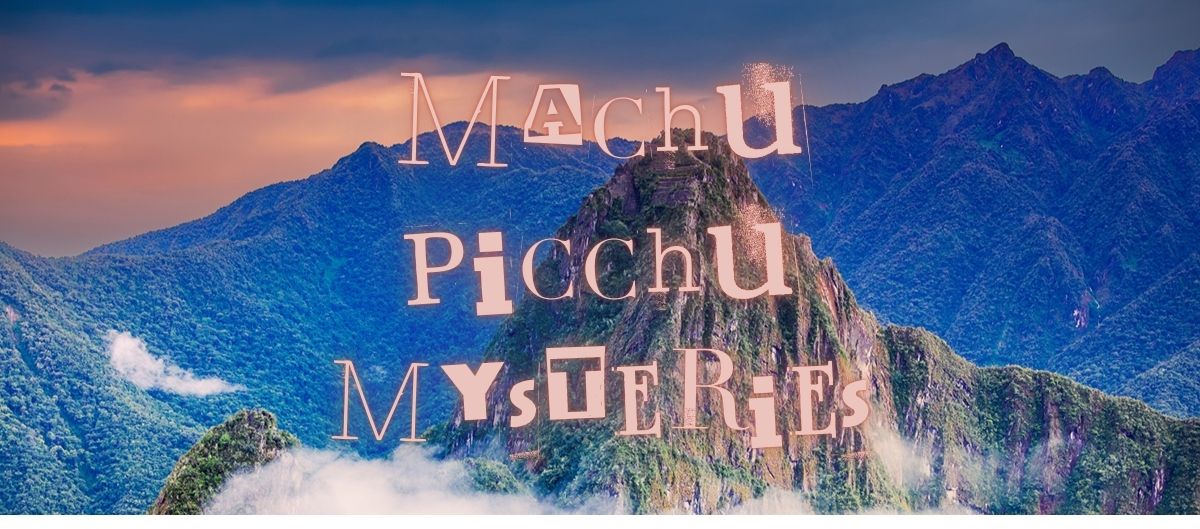Unraveling The Best and Biggest Mysteries of Machu Picchu

What is Machu Picchu?
There is no reference to Machu Picchu in Inca literature or folklore, so what is this culturally sophisticated engineering city in the Andes of Peru? Many archeologists believe that it was constructed as a retreat for the Inca nobility between 1400 and 1500 AD. But the extensive terracing suggests it may have been a center for crop testing or used as a trading hub.




Who lived in Machu Picchu?
Inca royalty would visit the city during the dry season to feast, celebrate and to hunt with their guests. Hundreds of servant lived on site year-round to maintain the palace. Many were not Incan but were taken from conquered lands and presented as gifts.
The people who lived at Machu Picchu were ethnically diverse, as shown by DNA analysis of the remains of people buried at the site. The bones of the people buried at Machu Picchu suggest that they lived comfortable lives, with many living to old age and showing no signs of malnutrition, disease, or injury.

Was Machu Picchu a sacred site, or something more?
One of the most iconic buildings in Machu Picchu is the Temple of the Sun, a distinctive structure likely used for religious ceremonies related to the sun god, Inti.

This stunning building has a carved rock at the top which produces shadows corresponding exactly to the two solstices. Archaeologists believe this supports its use for religious worship and astronomical studies.
How did the Incas carve and carry the granite stones used in its construction?

Scholars still have no clue how people who didn’t have the technology of a wheel could have moved huge, multi-ton granite rocks up the steep Andean mountainside, leading them to conclude that hundreds of men must have worked together in their transport.
Although the Incas lacked steel tools, they were able to fit stones so tightly together it is difficult to fit a piece of paper between them. This, combined with extensive underground girding, as well as a massive gravel foundation, account for their stability, even though located at the top of a mountain on an earthquake fault line. Sophistication such as this still astonishes visitors, scholars and scientists!

What is the “astronaut theory” surrounding Machu Picchu?
Scholars discount the idea that an alien race assisted with the construction or lived in Machu Picchu. However there are still many who point to an “astronaut theory” suggesting it was built by an older and more advanced tribe, pointing out distinct design techniques found throughout Machu Picchu. One often sees the heaviest and more finely carved stones at the bottom of walls and structures and less defined, smaller on the top of many buildings.
They question why a civilization would exhibit less finesse over time? Why would a civilization regress in its architectural abilities? Astronaut theorists credit the older masonry to a superior civilization that predates the Incas.

Is the Intihuatana Stone a Sundial or Heavenly Portal?
Recent theory by archeologist Giulio Maglia has reignited the mystery of this distinctive stone. Magli says that Machu Picchu was designed as “the last leg on a pilgrimage that mimicked the Inca myth of a journey from the Island of the Sun into the stars.” The climb to the top would have been the final destination for pilgrims. The mystery, however, remains as to what would have drawn pilgrims to such an impractical location so far from the river banks.

Why did Machu Picchu disappear for four centuries?
There are no accounts of the Spanish Conquistadors invading the region, but most historians blame the diseases they brought with them…smallpox, measles, and syphilis for Machu Picchu’s decline. Others theorize it was getting too expensive for the declining Inca Empire to finance. After civil wars, deadly epidemics, and the Spanish invasion, Inca royalty most likely fled to seek opportunities in other areas of the empire and this great achievement lay overgrown and hidden until its rediscovery by American explorer Hiram Bingham in 1911.
Related Posts
Tashkent: A Vibrant Clash of Exotic Culture and Commerce!
The term “Silk Road” evokes images of camel caravans crossing deserts, laden with silk, spices, …
June 5, 2025Rio de Janeiro and the Girl from Ipanema: Where Music Meets the Sea
Rio de Janeiro is more than a city—it’s sun-soaked poetry. From the iconic Christ the …
May 3, 2025

Bill Ferguson | 30th Oct 24
On my bucket list!